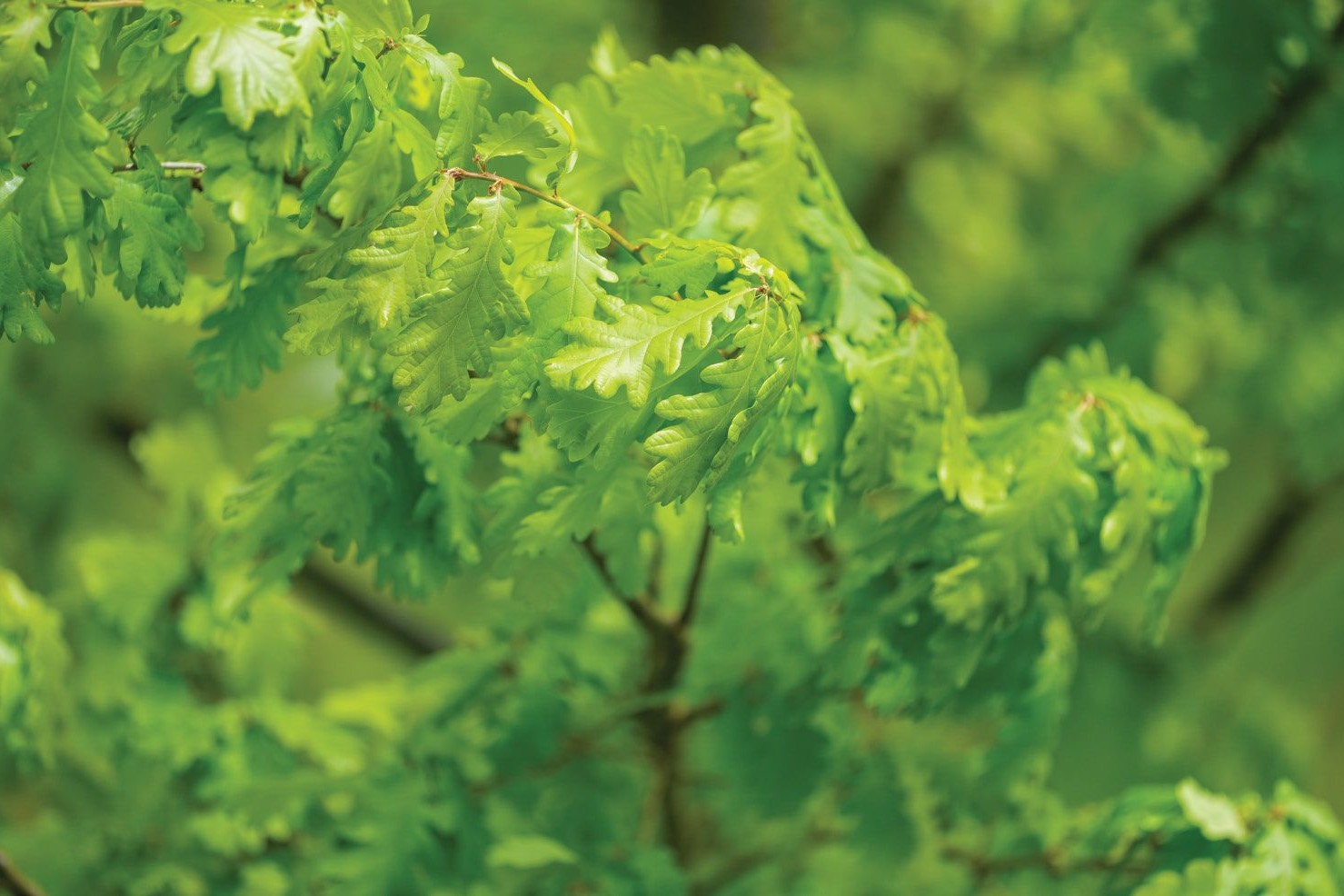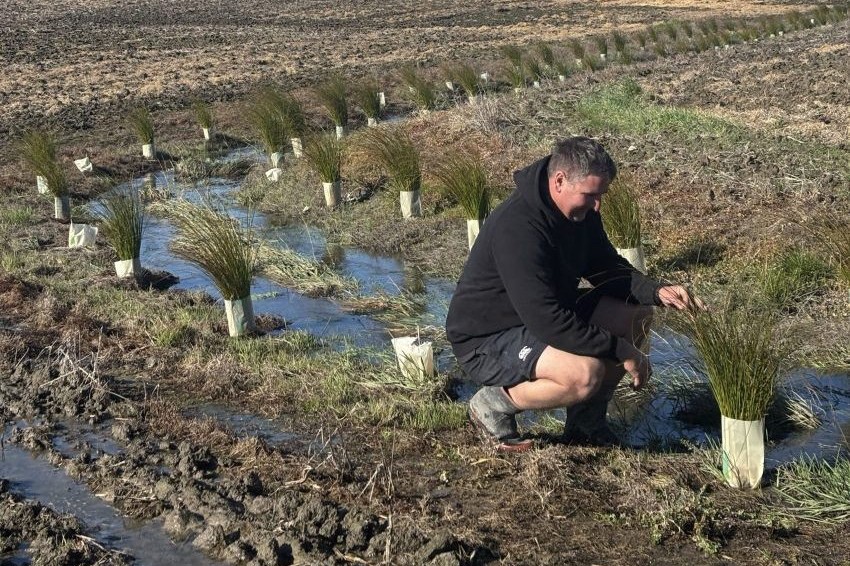Hearts of oak
East Coast farmer Peter Arthur loves his oaks, and he’s planted many over the years.

East Coast farmer Peter Arthur loves his oaks, and he’s planted many over the years.
Oaks are my favourite trees for farm planting, they are tough, can be colourful and can eventually make for good timber. Of the 500 different species, all from the northern hemisphere, I have about 80 different ones, and probably several thousand in total.
My most successful one, for its nice straight form and speed of growth is the Hungarian oak, Quercus frainetto. I only have about 20, 10 planted in a nice sheltered spot, and another 10 on a rather nasty wind-blown hilltop. They are thriving equally well on both sites.
In 2014 I logged a gully of pines. Part of it was so steep it should never have been planted with pines in the first place, and heavy rain, soon after logging, caused about a third of the gully to slip.
I collected about half a tonne of acorns from parks and roadsides and threw them by the handful into the gully. I also used a shanghai to fire acorns into hard-to-reach spots but this was rather slow but it’s amazing how far they would go.
It was a powerful shanghai I bought from a fishing and hunting shop. They had quite a range and, when I asked, I was told most of them were sold “for the next door neighbour’s cat”.
Today the gully is a developing forest of oaks, the best probably four metres tall. Survival has been poor on areas of easy access for goats and deer but good where there were pine slash heaps or small blackberry bushes. In about another 12 years time these eight-year-old trees should start dropping acorns which I hope will fill up any gaps.
I have about 20 different species of Mexican oaks which I have been trialling in shelter belt situations. The late Bob Berry, of Hackfalls Arboretum at Tiniroto, on the back road between Wairoa and Gisborne made eight trips to Mexico to collect acorns. Mexico has 160 different species, basically all of them being evergreen. No idea what the timber quality will be.
The English oaks, Quercus robur and Q. petraea are famed for their timber, for building, furniture, and – before the days of iron for ship building – it was used for the making of the Royal Navy which led to establishment of the British Empire.
The timber is strong and hard and due to the high tannin content resistant to insect and fungal attack. The timber of these two, and the American white oak Quercus alba are used for making wine and whisky barrels.
I thought the advent of screw top wine bottles would lead to the demise of the cork oak industry of Spain and Portugal, but it hasn’t. Posh eateries and wine connoisseurs still like to pull corks and are pulling more than ever before. I have several cork oak trees (Quercus suber) on a fairly sheltered but dry hilltop site but one of them has badly fallen to bits, two big branches falling out.
The most colourful of the oaks come from the United States. The best is Q coccinea which turns a very deep red in the autumn. Most-commonly planted is the pin oak Q. palustris. Good colour but an absolute bird’s nest of small side branches. Appletons Nursery at Richmond sells a much superior form grown from seed collected at the Eastwoodhill Arboretum, Gisborne.
With similar good form and colour is Q. ellipsoidalis, the northern pin oak. The pin oaks and the swamp oak Q, bicolor will tolerate wet sites. Q. rubra colours but is not a strong red here. It likes acid soil. Quercus alba, the very slow growing American white oak can turn some nice orangey colours, but here, not every year.
Oaks are remarkably tough once they have developed a lignotuber, a starchy swelling at the top of the root plate. It enables the young tree to come again if it has been eaten off or burnt off. I have a big belt of several hundred Quercus candicans, a big-leafed evergreen from Mexico, planted in 2016. The belt has been hammered by goats and deer, and has only just got away this year due to lots of shooting of the pests. The best are two to three metres tall. Last winter I had six spare plants in my nursery and went to fill up gaps. In gap after gap there was a tiny 15cm tall sprout, lost in the long grass. They are now almost a metre high.
Acorns are loved by cattle, sheep, goats, ducks and pigs but a surfeit with nothing else to eat can be fatal to all except the ducks and pigs. Most fatalities have occurred in fenced off, oak-lined driveways where sheep have been put in to clean it up. Nothing much to eat but acorns. I have watched sheep waiting for an acorn to fall, and when one does, there is a mad rush for it.
The best Portuguese and Spanish hams come from pigs finished on Q. faginea acorns. Acorns were an important part of the American Indian diet, who leached out the tannins by putting them in slow moving water before grinding them into flour. A New Yorker, who was messing about trying to make flour couldn’t work out how to leach them and finished up putting them in a muslin bag and then into the lavatory cistern.
Under the wings of the New Zealand Farm Forestry Association is the Oak Action Group with about 120 members, led by Eric Cairns of the Hutt Valley. They are doing trial plantings and measuring growth rates, plus a few members are experimenting, using acorns for making cakes and biscuits. Basically the group is interested in finding the best trees for timber production. Long term thinking as it will be at least 80 years before harvesting.
There are many oak trees planted throughout NZ as memorials to those soldiers killed in the two world wars and to visits by royalty.
Oaks and hazels are used as the host plants for growing truffles and I have scattered spores of the rather expensive porcini mushroom, Boletus edulis around many of my trees. No results so far.
Havelock North orchardist, Dave Cranwell has been raising funds for a small north Indian village by selling seedlings of the evergreen Himalayan oak Q. leucotricophora. It can be trimmed into a useful horticultural shelter belt. One of its joys is that the roots go straight down and don’t spread out, so root pruning is not required.
My planting days are almost over, but if I was starting again I would mark out a fenced off area, spot spray, wait for the grass to die off properly, then bore shallow holes with a 75mm auger attached to a cordless electric drill, dropping an acorn into each hole and covering it over.
Bob Berry always said an acorn planted in its final spot always did better than a seedling transplanted from a pot, and he was the expert.




